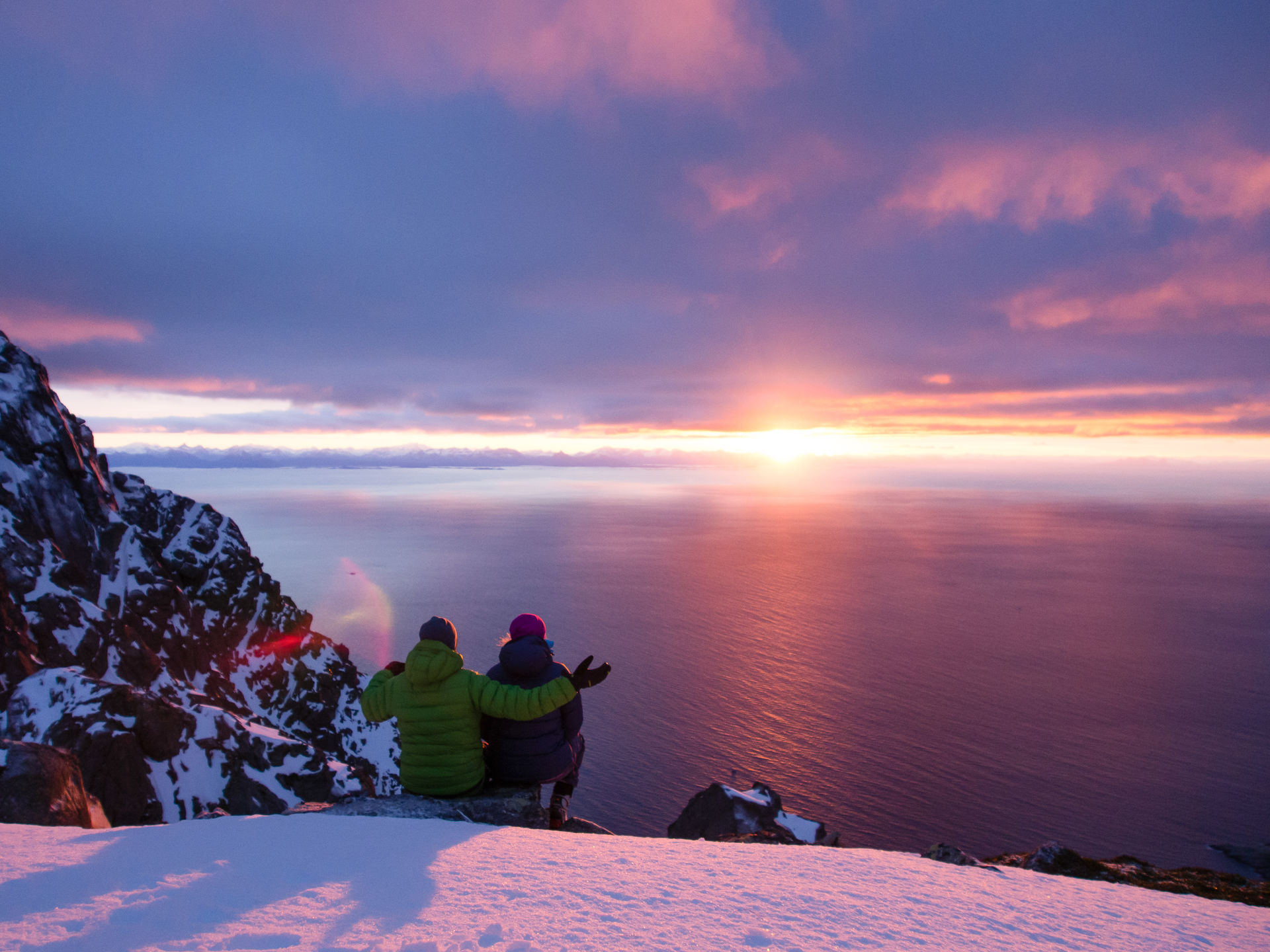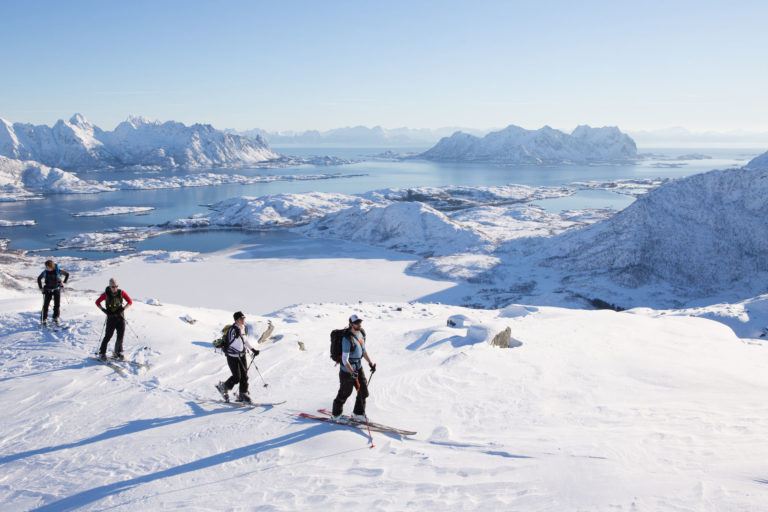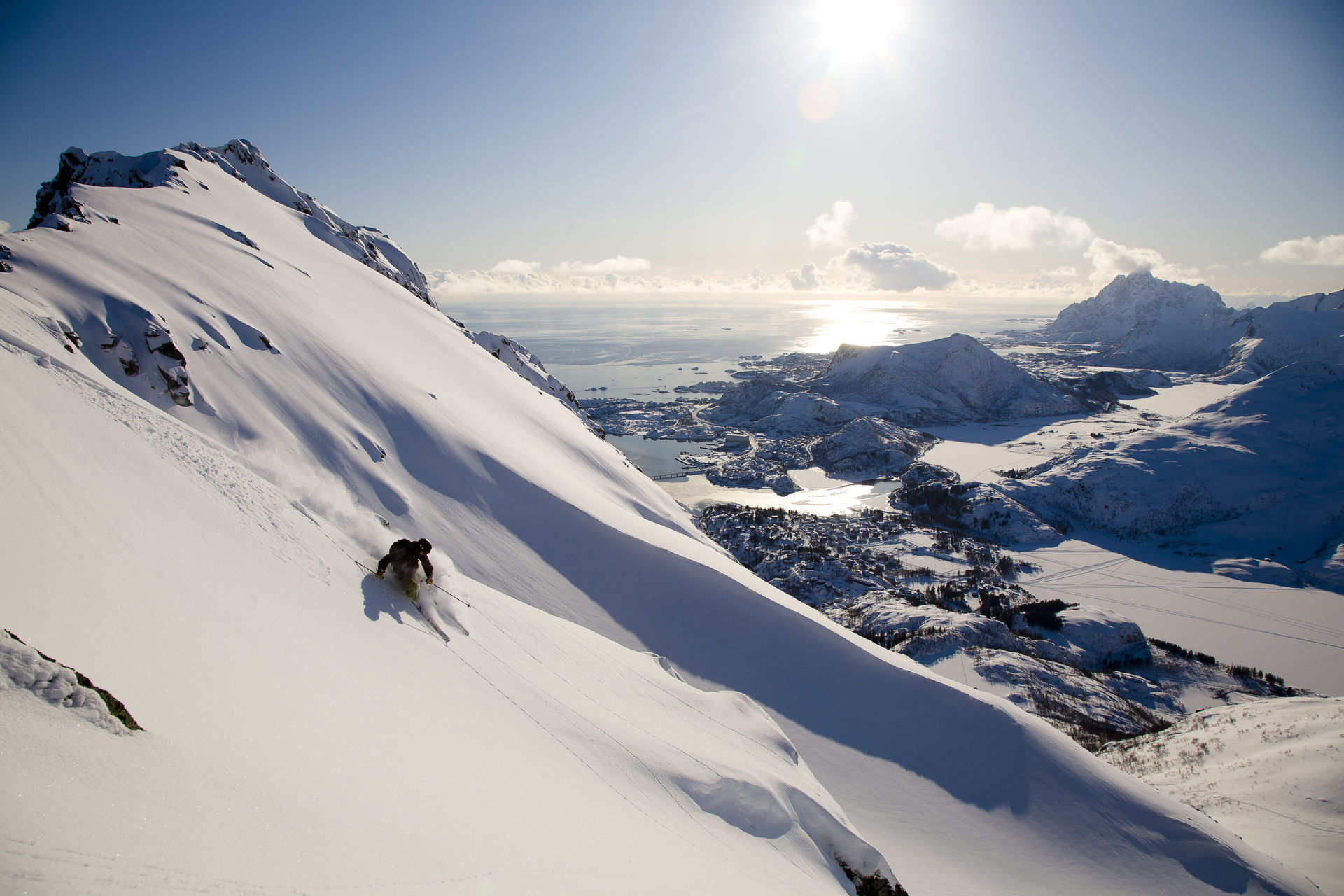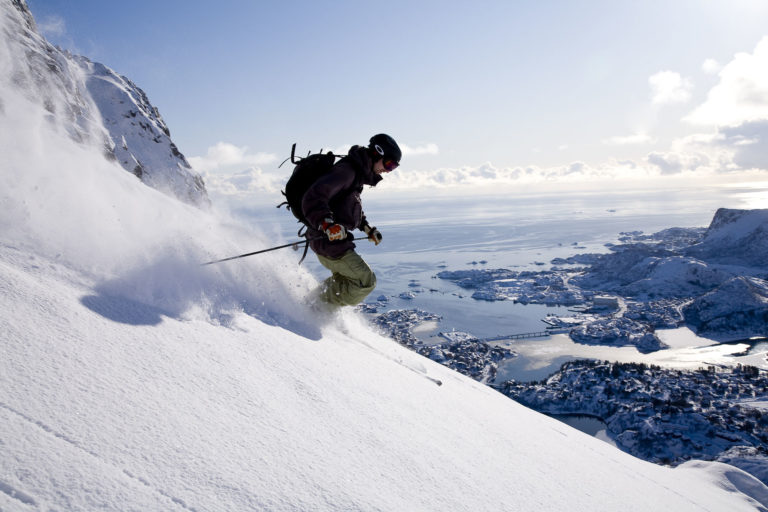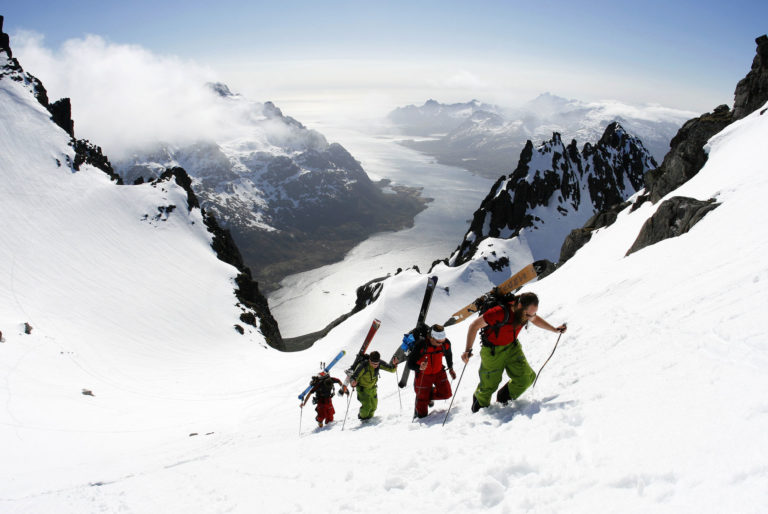The best way to experience the peaks of Lofoten is on a pair of skis in winter. Nowhere else in the world offers such mountain and sea views, while the thrilling descents are breathtaking.
Imagine standing on the summit of a mountain in Lofoten on a sunny day in March or April. The mountainside beneath you is so steep that you can’t see the shore at the bottom, but out at sea there are hundreds of boats and fishermen, because this is fishing season. The Lofoten Wall stretches away to your right and left, and right now you’re a part of it. Way out to your right, you can see Lofotodden and then Mosken, Værøy, and Røst. Straight ahead, in the distance, you can see the peaks of Steigartindan on the mainland. And down to your left is an almost vertical gully, down which you are about to plunge. If this sounds absolutely terrifying, then skip to another page. If it’s got your adrenaline pumping, then read on!
New tracks in the skiing landscape
From an off-piste perspective, you can’t say that Lofoten is anything other than a collection of ski slopes. As a rule, you can park your car and walk for ten minutes to reach the foot of the mountain. There are slopes of every kind, from wide and gentle for beginners to tight vertical gullies for ski-touring extremists. The height of the mountains might not be all that impressive, with Himmeltinden on Vestvågøy island only reaching a modest 931 metres (3,054 feet), despite its name which translates as Sky Peak, but there are downhill sections of every grade of difficulty.
Late start, late finish
Lofoten is in the middle of the Gulf Stream, and the snow comes late here. It’s not until Christmas that there is any to speak of. But that’s also the time of the twilight months and their short days, and on top of that, the area is lashed by storms so strong they are given names. But as we head into February, the weather becomes more predictable, even if a temperamental low-pressure area from the Arctic Ocean can fill the gullies with hip-deep, delicate powder snow. March and April are perfect for excursions in Lofoten, with very settled weather, long days, mild daytime temperatures and reliable snow. In May, there is still snow between the peaks, with grainy snow-like soft ice cream, which is fun to ski on. In some years, the season even lasts until June, letting you ski under the midnight sun.
Lofoten Splitboard and Ski-touring Festival
At Hattvika Lodge at Ballstad on Vestvågøy island, a mountaineering festival is held every April. The event takes place over a long weekend and includes daily mountaineering trips to specially selected ski mountains with a difference, a trip out on the Lofoten Sea to fish for Skrei cod, and parties in the evenings, with Skrei cod, salt cod, and other local Lofoten dishes on the menu. The event is sold out long in advance each year, so book early. At the bottom of this article, we have posted footage filmed during the festival showing the skiers Kaj Zachrisson, Tom Guneriussen and David Underland.
Safety first
The steep mountains in Lofoten are not for everyone. It’s particularly important to be aware of your own level and limitations. You must be sure that you can actually ski down the mountain that you have chosen to ascend. Your basic personal equipment should include an avalanche beacon, avalanche probe, and spade, and you must be able to use this equipment. You should also have had some companion rescue training in the mountains. Wind and temperature changes through the winter mean that the snow conditions vary tremendously from year to year. It is therefore important to take a local guide who has been watching the snow develop throughout the winter. In any case, remember to check the avalanche forecast at Norway’s national forecast Varsom
